Ika (IKA) Crypto Coin Explained: How It Works, Use Cases, and Where to Trade
Ika (IKA) Token Explorer
About Ika (IKA)
Ika (IKA) is a utility token that powers the fastest parallel Multi-Party Computation (MPC) network, built as a fork of the Sui blockchain. It enables payments for network services, staking for security, and voting on protocol upgrades.
Through its dWallet and Zero-Trust Protocols, Ika provides native cross-chain interoperability without the risks of traditional bridges.
Technical Foundations
Multi-Party Computation (MPC)
Cryptographic technique enabling multiple independent nodes to jointly sign a transaction without any single node ever seeing the full private key. Ika scales this to hundreds of signer nodes, delivering up to 10,000 tps.
Sui Blockchain
High-performance Layer-1 built on the Move language and the Mysticeti consensus. Ika forks Sui to inherit its fast consensus while disabling generic smart contracts to focus exclusively on MPC signing.
Mysticeti Consensus
Byzantine Fault Tolerant protocol that finalizes blocks in sub-second timeframes, providing the low-latency backbone for thousands of parallel signatures.
Core Functions
- Payment Layer: Every cross-chain transaction requires a small fee paid in IKA. The fee model is dynamically adjusted by governance to stay competitive.
- Staking & Security: Validator-like signer nodes lock up IKA as collateral. If a node behaves maliciously, its stake can be slashed, protecting the network from collusion and non-zero-trust attacks.
- Decentralized Governance: Token holders submit and vote on proposals ranging from fee adjustments to new signature algorithms.
dWallet & Zero-Trust Protocols (ZTP)
The dWallet system allows users to create a programmable account that lives simultaneously on every blockchain supported by Ika. Zero-Trust Protocols ensure that even if a signer node is compromised, the attacker cannot exfiltrate private keys or move assets without meeting the dWallet’s programmed constraints.
- Sovereignty Problem: Users retain full control over their assets across chains.
- Honeypot Problem: Traditional bridges lock assets in a single contract, creating ripe targets for exploits.
Ika vs Traditional Bridges
| Feature | Ika | Traditional Bridge |
|---|---|---|
| Native Asset Handling | Direct control via dWallet | Wrapped tokens created after lock-up |
| Security Model | Zero-trust MPC | Centralized bridge contracts |
| Speed | Sub-second finality | Minutes to hours |
| Scalability | Hundreds of signer nodes | Limited validator nodes |
| Supported Chains | Multiple chains | Depends on implementation |
Market Availability
As of October 2025, IKA trades on a limited number of platforms, notably the IKA/USDT pair on Phemex.
Institutional backing exceeds $21 million, with investors like Digital Currency Group and Node Capital supporting development.
Roadmap Highlights
- Integration of additional signature schemes
- Launch of developer sandbox on ika.xyz
- Expansion of signer node incentives
- First major cross-chain DeFi product
Ika Token Utility Calculator
Estimate potential earnings from staking IKA tokens based on current network parameters.
Estimated Staking Reward
Your estimated reward will appear here.
Key Takeaways
- Ika (IKA) is a utility token that powers the fastest parallel Multi‑Party Computation (MPC) network, built as a fork of the Sui blockchain.
- The token enables payments for network services, staking for security, and voting on protocol upgrades.
- Through its dWallet and Zero‑Trust Protocols, Ika provides native cross‑chain interoperability without the risks of traditional bridges.
- As of October2025, IKA trades on a limited number of platforms, notably the IKA/USDT pair on Phemex.
- Institutional backing exceeds $21million, with investors like Digital Currency Group and Node Capital supporting development.
What Is Ika (IKA) Token?
When you hear Ika crypto, think of a purpose‑built token that fuels a specialized blockchain network designed for ultra‑fast, secure multi‑chain operations. Ika (IKA) is a native utility token of the Ika Crypto Network, a fork of the Sui blockchain that runs the world’s first sub‑second Multi‑Party Computation (MPC) protocol. Holders use IKA to pay for transaction fees, stake to lock up signer nodes, and vote on governance proposals that shape the network’s future. The token’s supply, distribution, and economic parameters are deliberately flexible, allowing the community to adjust them through on‑chain votes.
Technical Foundations
The Ika network’s speed and security stem from three core technologies:
- Multi‑Party Computation (MPC) a cryptographic technique that lets multiple independent nodes jointly sign a transaction without any single node ever seeing the full private key. Ika scales this to hundreds of signer nodes, delivering up to 10,000tps.
- Sui blockchain a high‑performance Layer‑1 built on the Move language and the Mysticeti consensus. Ika forks Sui to inherit its fast consensus while disabling generic smart contracts to focus exclusively on MPC signing.
- Mysticeti consensus a Byzantine Fault Tolerant protocol that finalizes blocks in sub‑second timeframes, providing the low‑latency backbone for thousands of parallel signatures.
By decoupling signing from general purpose computation, Ika eliminates the bottlenecks that slow down most MPC solutions, which typically rely on 4‑8 nodes and incur 30seconds of latency per transaction.
Core Functions of the IKA Token
The token serves three intertwined roles:
- Payment Layer: Every cross‑chain transaction (e.g., moving assets from Bitcoin to Ethereum) requires a small fee paid in IKA. The fee model is dynamically adjusted by governance to stay competitive.
- Staking & Security: Validator‑like signer nodes lock up IKA as collateral. If a node behaves maliciously, its stake can be slashed, protecting the network from collusion and non‑zero‑trust attacks.
- Decentralized Governance: Token holders submit and vote on proposals-ranging from fee adjustments to new signature algorithms (e.g., adding EdDSA). Decisions are executed on‑chain, ensuring the network evolves with community needs.
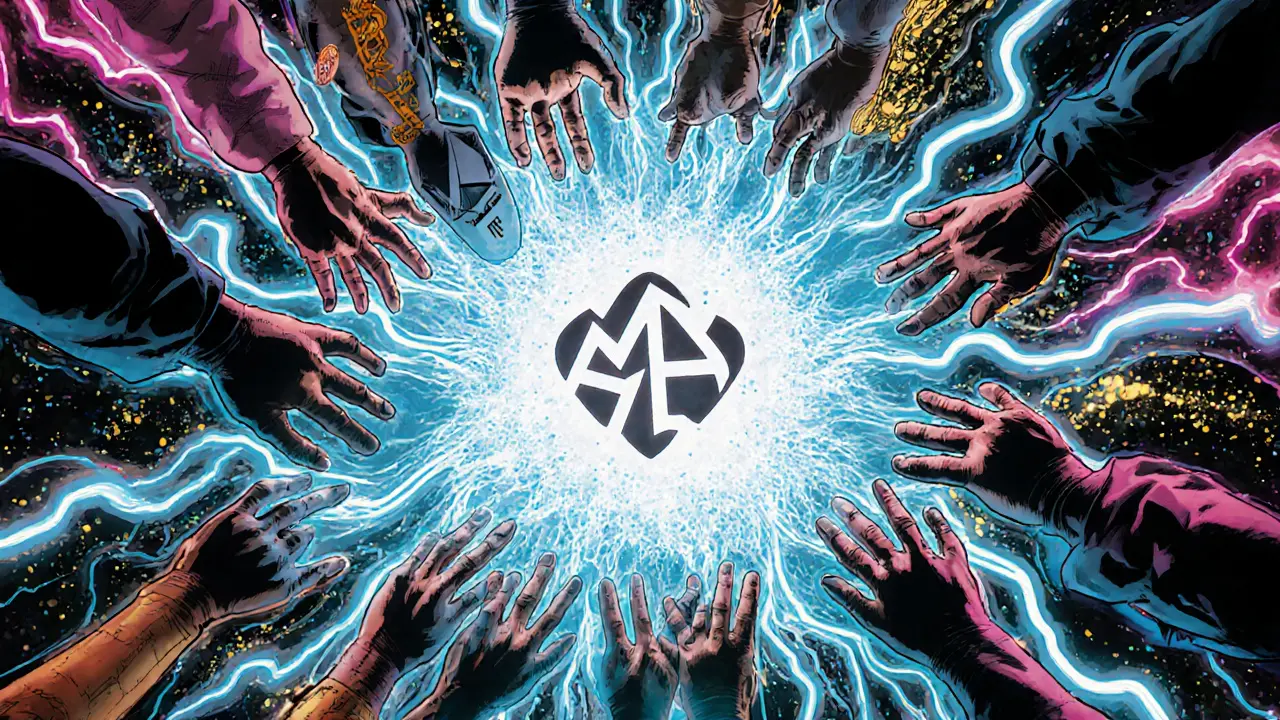
dWallet and Zero‑Trust Protocols (ZTP)
The real differentiator is the dWallet system. A dWallet is a programmable account that lives simultaneously on every blockchain supported by Ika (Bitcoin, Ethereum, Arbitrum, Polygon, Solana, etc.). Users create a dWallet once, then attach custom logic that defines what kinds of transactions the network can sign on their behalf.
Zero‑Trust Protocols guarantee that even if a signer node is compromised, the attacker cannot exfiltrate private keys or move assets without meeting the dWallet’s programmed constraints. This solves two notorious problems:
- Sovereignty Problem: Users retain full control over their assets across chains, rather than relinquishing custody to a bridge contract.
- Honeypot Problem: Traditional bridges lock assets in a single contract, creating ripe targets for exploits. dWallets sign directly on the native chain, eliminating the “wrapped token” risk.
In practice, developers can write Move scripts on Sui that encode spending limits, time‑locks, or multi‑signature requirements, then have Ika’s MPC network execute those scripts on any supported blockchain instantly.
How Ika Beats Traditional Cross‑Chain Bridges
Most cross‑chain solutions rely on lock‑and‑mint mechanisms: assets are locked on the source chain, a wrapped token is minted on the destination chain, and a bridging smart contract manages the swap. Ika’s approach bypasses this model entirely.
| Feature | Ika (IKA) Network | Typical Bridge (e.g., Binance Bridge) |
|---|---|---|
| Native Asset Handling | Direct control of native assets via dWallet | Wrapped tokens created after lock‑up |
| Security Model | Zero‑trust MPC, no single point of failure | Centralized bridge contracts, prone to exploits |
| Speed | Sub‑second finality, up to 10,000tps | Often minutes to hours due to confirmations |
| Scalability | Hundreds of signer nodes, can grow to thousands | Typically limited to a few validator nodes |
| Supported Chains | Bitcoin, Ethereum, Arbitrum, Polygon, Solana, more via signature standards | Depends on bridge implementation; often fewer |
The table makes it clear: Ika offers genuine interoperability without the custodial risks that have plagued bridge hacks in the past.
Market Availability and Where to Trade IKA
As of October2025, IKA’s exchange presence is still emerging. The most reliable source indicates that the IKA/USDT pair is listed on Phemex a regulated crypto exchange that offers spot trading for a limited set of niche tokens. Other major aggregators (CoinGecko, CoinMarketCap) show a “not listed” status, suggesting that broader market listings are pending.
If you want to acquire IKA, follow these steps:
- Create an account on Phemex and complete KYC.
- Deposit USDT (or another supported stablecoin) into your exchange wallet.
- Navigate to the IKA/USDT market and place a market or limit order.
- Withdraw the purchased IKA to a personal wallet that supports the Sui ecosystem (e.g., Sui Wallet) if you plan to interact with the dWallet protocol.
Because the token’s distribution is still relatively tight, expect modest liquidity and occasional price swings. Keep an eye on announcements from the Ika team for upcoming listings on larger centralized exchanges or DEXs built on Sui.
Roadmap, Governance, and Community Involvement
Governance is executed entirely on‑chain via IKA proposals. Anyone holding the token can submit a proposal after meeting a minimum stake threshold (currently 10,000IKA). Proposals are discussed on the project’s official forum and voted on using a quadratic voting system to reduce the influence of whales.
Key milestones for 2025‑2026 include:
- Integration of additional signature schemes (e.g., BLS) to broaden chain support.
- Launch of a developer sandbox on ika.xyz the official documentation hub where developers can test dWallet logic.
- Expansion of signer node incentives to reach 1,000 active nodes, pushing throughput beyond 12,000tps.
- First major cross‑chain DeFi product (a yield‑optimizing vault that moves assets between Ethereum and Solana instantly).
Institutional backers-Digital Currency Group (DCG) a leading venture firm in the crypto space, Node Capital a blockchain‑focused venture fund, and the Sui Foundation the entity behind the Sui blockchain-have collectively provided over $21million to fuel these developments.
Frequently Asked Questions
What problem does Ika solve that other blockchains don’t?
Ika eliminates the need for asset‑locking bridges by letting a single dWallet control native assets on multiple chains simultaneously. Its sub‑second MPC engine also provides speeds that traditional bridge validators can’t match.
How does staking work on the Ika network?
Node operators lock IKA as collateral. The network randomly selects signer groups from this pool for each transaction. If a node misbehaves, a portion of its stake is slashed and redistributed to honest participants.
Can I use Ika to move Bitcoin to Ethereum without a bridge?
Yes. You create a dWallet that holds a Bitcoin address and an Ethereum address. When you trigger a transaction, Ika’s MPC network signs a Bitcoin spend and an Ethereum receive in a single atomic step, so the assets never sit in a locked contract.
Where can I buy IKA tokens today?
The most reliable venue right now is the IKA/USDT pair on Phemex. Watch for announcements about new listings on larger exchanges or decentralized platforms built on Sui.
Is the Ika network secure against colluding nodes?
Ika’s Zero‑Trust Protocol assumes that any subset of nodes could try to collude. Because each signature is computed jointly without exposing the private key, even a large coalition cannot reconstruct the key or steal funds.

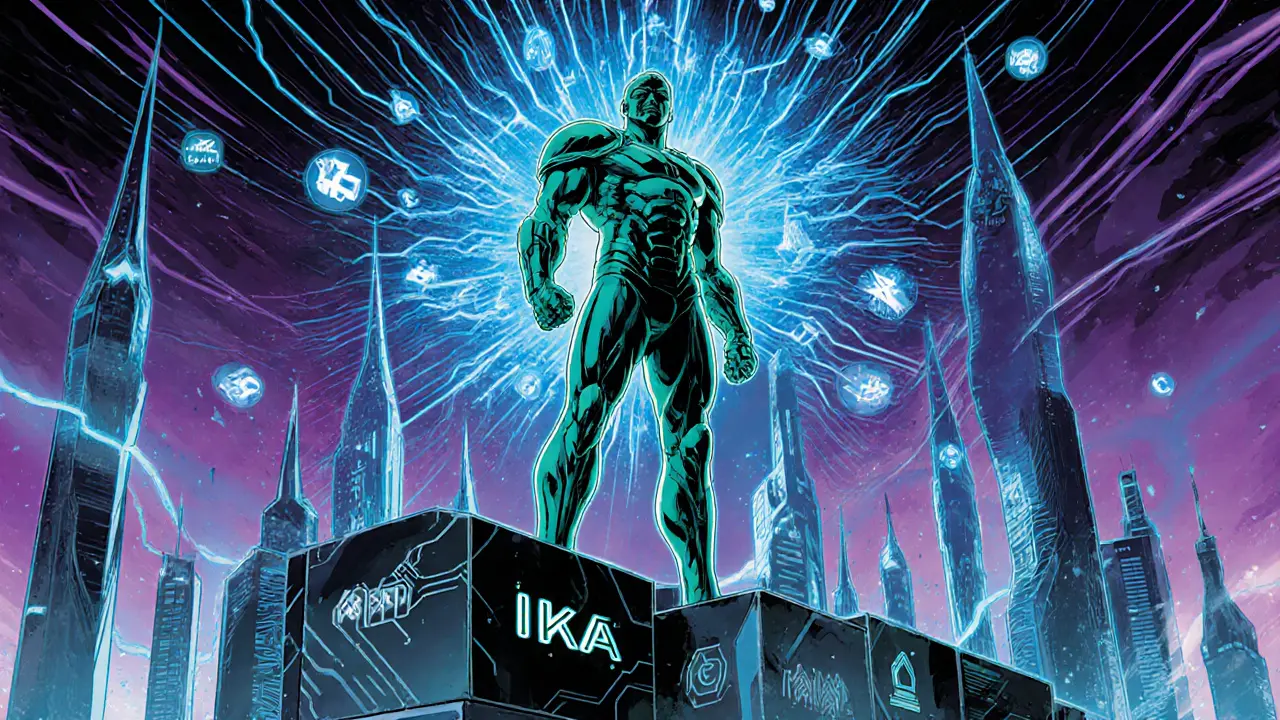
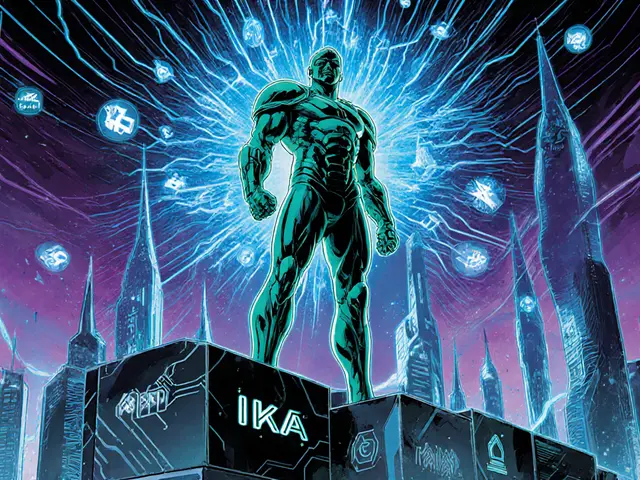
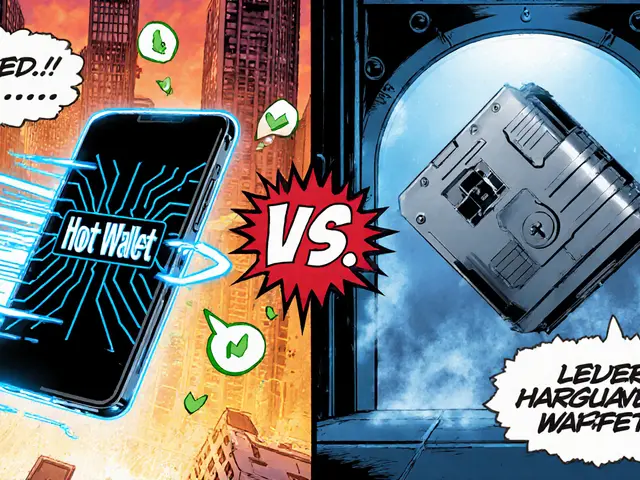


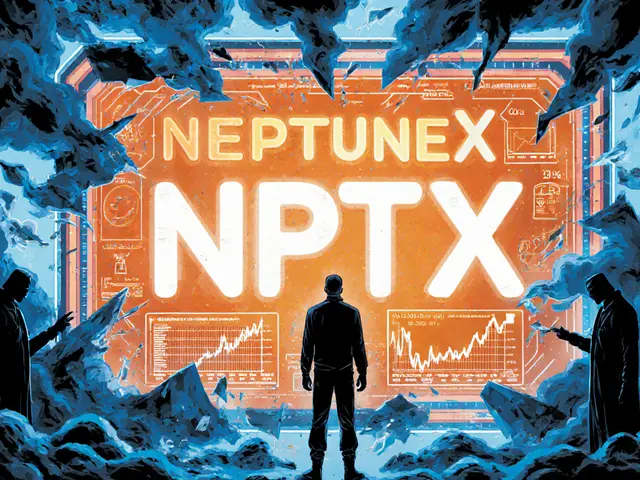

Ika is just another overhyped token hoping to ride the MPC hype, nothing special
I get why people are drawn to the idea of zero‑trust bridges, but the reality is that IKA’s ecosystem is still in its infancy. The dWallet concept sounds cool, yet you still need to trust the validator nodes to some extent. Staking rewards look tempting, but they could evaporate once the network scales. Bottom line: proceed with cautious optimism.
Behold the latest miracle token promising sub‑second finality while the rest of us slog through minutes. Yet the underlying tech is merely a fork of Sui with a few gimmicks added. One must ask whether this is genuine innovation or just a marketing veneer. The hype train is already leaving the station, and I’m not buying a ticket. In the grand scheme, IKA is a fleeting flash in the blockchain sky.
Reading through the IKA description makes me think about the broader quest for true interoperability. If the zero‑trust model holds, it could alleviate many bridge vulnerabilities we’ve seen. However, the network’s security hinges on a robust set of signer nodes, which is easier said than done. I’d love to see more real‑world deployments before getting fully on board.
Honestly, the whole premise reeks of techno‑buzzword salad tossed together to dazzle investors. The promise of “hundreds of signer nodes” sounds impressive, but without transparent audits it’s just colorful PR. Governance can “adjust fees,” but who watches the watchers? Until we see concrete evidence of cross‑chain transfers without hiccups, I remain skeptically amused.
If you’re looking to stake IKA, start with a small amount to test the waters. The reward calculator is a handy tool, but keep in mind the parameters can change. Always double‑check the staking contract address before sending any tokens.
Wow, the future of finance is apparently living in a dWallet now! It’s like having a Swiss army knife that can cut across every chain.
While you dismiss IKA as hype, the underlying MPC protocol does introduce a novel way to handle private keys.
Even with typoes the concept merits a deeper look before outright condemnation.
Yo, your optimism sounds cute but let’s be real – the market loves shiny new tokens.
Dont forget the endless pump‑and‑dump cycles that follow soon after.
From a community standpoint, IKA’s cross‑chain ambitions could help bring diverse users together. It’s important to foster inclusive education around how these zero‑trust mechanisms work. That way more folks can participate safely.
I like the idea of faster bridges, keeps things moving. Not much else to say.
Yo, I gotta jump in – that colorful PR is exactly what the space needs!
Look, if investors are vibing with the hype, the token will ride that wave regardless of audits.
Oh great, another “game‑changing” token that will probably flop like the rest. The promised speed is just marketing fluff, and the governance model looks as centralized as a coffee shop Wi‑Fi. Save your money.
As an american patriot I can’t stand this foreign tech taking over our financial freedom. IKA is just another foreign puppet trying to infiltrate our markets. We should keep our assets in home‑grown solutions.
If IKA actually launches a DeFi product next month, the entire crypto world will have to rewrite the rulebook! That would be insane.
The IKA project, at its core, attempts to solve one of the most persistent challenges in the blockchain ecosystem: secure, low‑latency cross‑chain transfers. By leveraging a multi‑party computation network, it claims to eliminate the single point of failure that has plagued traditional bridges. This architecture, if implemented correctly, could dramatically reduce the attack surface that hackers exploit. Moreover, the use of a forked Sui chain provides a high‑throughput foundation that many other L1 solutions lack. However, the decision to disable generic smart contracts in favor of pure MPC signing raises questions about flexibility and future development. Stakers are promised attractive yields, yet historical data from similar projects suggests that reward rates often plummet as the network matures. Governance tokens that can adjust fees and protocols are a double‑edged sword: they empower the community, but also concentrate power in the hands of active voters. The dWallet concept, while innovative, will require user education on programmable constraints-a non‑trivial hurdle for mass adoption. Institutional backing of over $21 million signals confidence, but capital alone cannot guarantee technical success. In practice, the real test will be how the network handles sudden spikes in transaction volume without compromising security. The roadmap hints at additional signature schemes and a developer sandbox, which are promising signs of ongoing development. Yet, the timeline for these milestones remains vague, leaving investors to speculate on delivery dates. If IKA can deliver seamless, sub‑second finality across multiple chains, it would indeed set a new benchmark. Conversely, failure to meet these lofty expectations could erode trust not just in IKA but in MPC‑based solutions more broadly. Ultimately, the project's fate will hinge on transparent communication, rigorous audits, and real‑world usage. Until those pieces fall into place, it's wise to approach IKA with both curiosity and caution.
The Mysticeti consensus claims sub‑second block finality, which sounds impressive on paper. I need to see real performance metrics to be convinced. Hopefully the developers will publish detailed benchmarks soon.
When I think about the broader implications of a zero‑trust, MPC‑driven bridge, I picture a future where assets flow freely without custodial chokepoints. The colorful language around dWallets masks a genuinely transformative architecture that could democratize liquidity. Yet, such ambition demands rigorous testing and community oversight. I’m eager to see collaborative audits that involve both seasoned cryptographers and everyday users.
Listen, the whole IKA hype train is nothing but a fragile illusion that will burst once real users encounter latency spikes. Their so‑called “fast” network is just a marketing gimmick, and anyone buying in now is being duped. Put your money where proven protocols actually work.
From a systems engineering perspective, the integration of MPC with a forked Sui layer introduces a multi‑dimensional attack surface, necessitating comprehensive threat modeling. The protocol’s reliance on signer node incentives must be calibrated against potential collusion vectors, especially in low‑liquidity environments. Additionally, the Zero‑Trust Protocols (ZTP) implement constraint‑based transaction validation, which could be leveraged for complex financial derivatives if correctly abstracted. Stakeholders should therefore prioritize formal verification and cross‑chain interoperability standards to mitigate systemic risk.